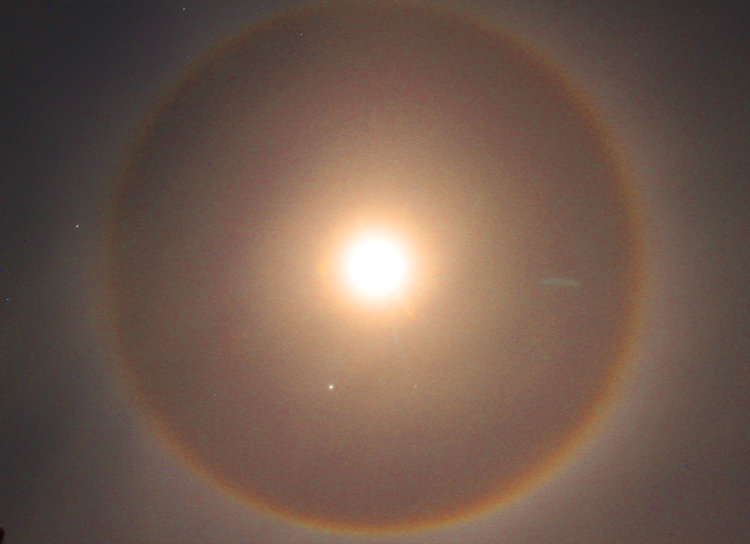
My attempts to finagle a clear sky and/or some nice Geminids meteors failed, but the haze did produce a nice, wide lunar halo, which nonetheless took a much longer exposure to bring out than the moon required, so the moon got blown out in the middle. This is at 18mm and just barely got the halo in the frame – I could have gone wider with another lens, but didn’t deem it worth the effort.
What else do we have here? The small bright spot to the lower left of the moon is Jupiter, while the star to the direct left, in the halo, is Capella. The streak to the right is likely an indication that I either need to clean my lens or there’s a small hair within capturing the internal reflections – it’s in all of the frames. What can just barely be made out is the faint refraction from the high-altitude ice crystals, meaning the halo is really a rainbow of sorts, known technically as a 22° halo. Naturally, I had to boost saturation by 200% to bring out the colors better.

The color cast within the halo becomes very obvious now, while the blue end of the spectrum makes the barest appearance. But overall, not the night to chase meteors, though granted, in a few minutes it’ll be the 14th, so perhaps my luck will change then.
Earlier today, before the haze really started to develop, I caught a hint of another refractive phenomenon:

While it has the appearance of a sundog, it’s way too far from the sun for that, and was likely a tiny portion of a circumzenithal arc. As the clouds (or dispersing plane contrails, as I suspect they actually were) moved on in the high altitude winds, the arc vanished, so this was all I got. Excitement City, I know. But I got the hint that I might be getting some cooler pics soon, if I make the effort. We’ll see…



















































